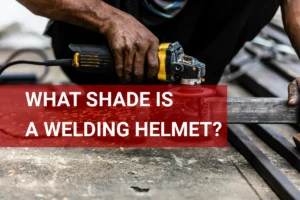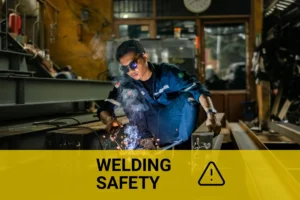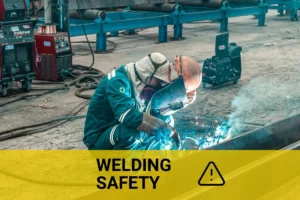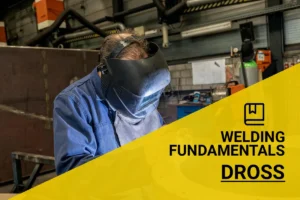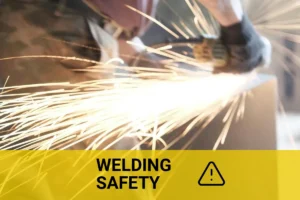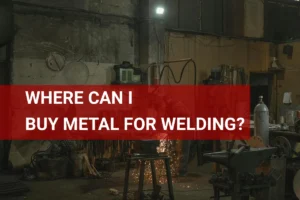How to Weld on Cricut? Steps, Tips, and FAQs
Published on: May 16, 2025 | Last modified: March 4, 2025
By: Joe Carter
If you thought welding was only for metal, think again! How to weld on cricut is a big question among crafters. Understanding how to weld can make your designs look cleaner and more professional. In my experience, I’ve noticed that welded designs hold together better and cut more smoothly.
In this guide, we’ll explore how to weld on Cricut, learn about different Cricut machine types, go through the steps to weld on Cricut, discuss factors affecting welding, and answer some common questions. You’ll gain insight into how to use weld on Cricut and become a pro in no time!
Contents
How to Weld on Cricut?
A Cricut is a cutting machine for crafting. To weld on Cricut, select shapes, click the “Weld” button, and combine them. It takes about 3 seconds. This is easy and perfect for personalized designs.
What is Cricut?
Cricut is a digital cutting machine designed for crafters. It uses advanced technology, like a cutting blade, to make precise cuts on various materials. The device can cut over 100 materials, including vinyl, cardstock, and fabric, making it versatile. Generally, Cricut machines have cutting precision down to 0.1 mm (0.004 Inches), ensuring clean edges and intricate designs.
When we talk about welding on Cricut, it’s all about merging shapes and letters into a single piece. I remember the first time I tried this technique; it made my projects look much more polished. With just a few clicks, I transformed basic text into beautiful designs.
I’ve used it before for customizing invitations. Once, I was making wedding invitations and needed my lettering to flow seamlessly. By welding on Cricut, I connected letters to create elegant titles that impressed everyone. It’s amazing how a small tool can elevate your project, right?
Types Of Cricut Machines
What are the types of Cricut machines, and how do you join shapes?
Cricut Maker
The Cricut Maker is the most versatile machine, capable of cutting everything from paper to fabric. To join shapes, select your designs in the Canvas, then click “Weld” to merge them into one piece for a seamless cut.
Cricut Explore Air 2
The Explore Air 2 is a powerful cutting machine popular for DIY projects. To merge designs, group your items in the design area, then click “Weld.” This action fuses them into a single layer, simplifying the cutting process.
Cricut Joy
The Cricut Joy is ideal for smaller projects and quick crafts. To combine graphics, select your designs and click the “Weld” button to link them into one shape, making cutting easier and faster!
Cricut Easypress
The EasyPress isn’t a cutting machine; it’s for heat transfer projects. You can’t weld as with others, but you can layer designs after cutting them with a different Cricut. This machine helps apply your designs smoothly and evenly.
For those interested in the welding process, understanding how many rods are used can be crucial in estimating welding rod usage.
We’ve wrapped up the different types of Cricut machines here. Next up, we’ll look at how to weld on Cricut.
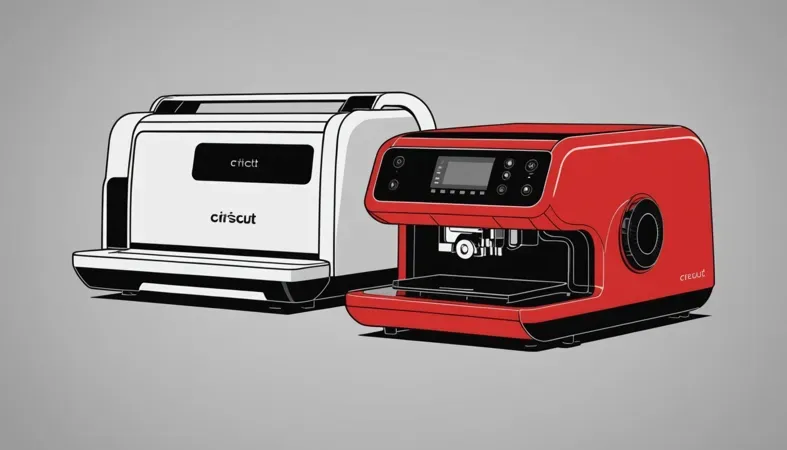
Steps to Weld on Cricut
Here are the steps to weld using your Cricut machine. Follow these easy steps for smooth results!
Select Your Design
Choose the design you want to weld. You can create one from scratch or select a pre-made image from the Cricut library. For best results, make sure your design consists of multiple shapes or text elements. Aim for at least two shapes touching each other to effectively use the welding feature. Open your design in Cricut Design Space. Click the image, adjust the size if needed, and use the “Size” tool in the toolbar. Keep measurements consistent, like under 12 inches (30.48 Cm) wide for standard mats. This sets you up for a smooth welding process!
When considering welding techniques, understanding the classification of electrodes can significantly impact your approach and results.
Group Your Pieces
Arrange your shapes so they overlap or touch. This is crucial for creating a cohesive design that welds seamlessly. Select each element while holding the shift key to make multiple selections. Precision is key—the closer they are, the better the weld, so be patient! Feel free to experiment with the design until it feels right. Adjust shapes and elements carefully to refine your layout. It’s important to make it visually appealing while ensuring the functionality of welding. Understanding the method to weld an edge joint can enhance your technique in various welding applications.
Weld the Design
Welding can seem tricky at first! Select all the overlapping or touching pieces from the last step. Go to the bottom right and find the “Weld” button. Clicking it unites those shapes into a single piece, simplifying your design!After welding, check for any unwanted gaps. Sometimes, shapes may not connect as seamlessly as you’d like, requiring slight adjustments. If you encounter this, try moving pieces closer together or using the “Align” feature for precise positioning.
Finalize Your Design
With your pieces welded together, review your design for any final tweaks. Look for inconsistencies to ensure everything looks polished. Zoom in for a closer inspection—it makes a big difference! Also, ensure the size fits your cutting mat.
Once you’re satisfied, you’re ready to cut! Click “Make It,” set your material settings based on your material type, like cardstock, and hit “Go.” You’ve just transformed your design into a tailored cut using your Cricut!
We’ve wrapped up the steps to weld on Cricut here. Next up, we’ll look at the factors affecting welding on Cricut.
Factors Affecting Welding on Cricut
What factors influence your ability to successfully join shapes in Cricut?
Material Type
The material you choose affects how well you can weld. For instance, Cricut vinyl requires a different approach than cardstock. Each material has ideal settings, including pressure and speed, which impact the final outcome. Explored through its distinct techniques, RMD welding also emphasizes the importance of selecting appropriate materials for optimal results.
Design Complexity
Intricate designs can complicate welding. Detailed patterns may need specific adjustments in the weld settings to ensure smooth connections and proper cuts.
Software Version
Using an outdated software version can limit features. For example, Cricut Design Space updates regularly, improving welding functions. Keeping it updated makes a difference.
Welding Settings
Your chosen settings directly influence effective welding. Adjusting parameters like overlap and stroke width can enhance or hinder the welding process, depending on your design needs.
Tool Compatibility
Your Cricut machine type matters too. Each model, like the Cricut Maker or Explore Air 2, has unique capabilities that affect welding. Knowing your tool helps set the right expectations.
We covered the factors impacting welding with Cricut.
Essential Tools for Welding on Cricut
1. Cricut Design Space
Cricut Design Space is your main tool. It’s where you’ll do all your designing and welding. Make sure you’re comfortable navigating it.
2. SVG Files
You’ll often use SVG (Scalable Vector Graphics) files for welding. These files keep your designs sharp and allow for smooth welding. Grab some free SVG files online!
3. Computer or Tablet
Whether you use a computer or tablet, make sure it’s compatible with Cricut Design Space. A stable connection helps avoid glitches.
4. Material for Cutting
Choose your material wisely. Cardstock, vinyl, or paper can all be welded differently. Test your materials for the best results!
5. Cutting Mat
A good cutting mat helps your material stick while cutting. Remember, different materials might need different mats!
Frequently Asked Questions (FAQs)
Now let us look at some unique questions I typically get asked.
Why Can’t I Weld on Cricut Design Space?
No, you can weld on Cricut Design Space, but there are certain limitations. If your design has elements grouped together, you won’t see the weld option. Also, it may not work well with incompatible shapes due to overlapping or disconnected paths.
What is the Difference Between Weld and Flatten on Cricut?
The main difference between weld and flatten on Cricut is their function. Weld combines shapes into a single outline, while flatten converts a design into a print then cut layer. Use weld for cut designs, and flatten when you’re merging images for printing. If you explore various methods of joining metal materials, you might find insights into DC inverter welding machines that can add precision in your projects.
What Does “Weld” on Cricut Mean?
Weld on Cricut refers to the process of merging multiple shapes into one. When you weld, the overlapping areas of shapes disappear, creating a single cohesive shape and ensuring cleaner cuts. This is essential for preventing misalignment during cutting. Discover how laser welding seamlessly merges materials with precision and efficiency.
Can I Undo a Weld in Cricut?
Yes, you can undo a weld in Cricut using the Undo button or Ctrl + Z shortcut. However, once you save and exit the file, the weld can’t be reversed. It’s wise to duplicate your original design before welding, ensuring you can always return to it.
Is There a Limit to How Many Shapes Can Be Welded on Cricut?
There’s no official limit to the number of shapes you can weld on Cricut, but performance may decline with overly complex designs. Generally, welding around 10-20 shapes works best for maintaining smooth functionality during processing and cutting. For automotive enthusiasts, figuring out how many times you can weld an alloy wheel can involve similar considerations regarding material integrity and design complexity.
How Do I Know if My Design Can Be Welded?
You’ll know your design can be welded if the weld option appears in the Operations panel. Look for overlapping shapes; if they align correctly, you’re good to go! If not, you may need to reposition or adjust some shapes before welding. For additional insights into the welding process, consider reviewing welding guidance to ensure optimal results.
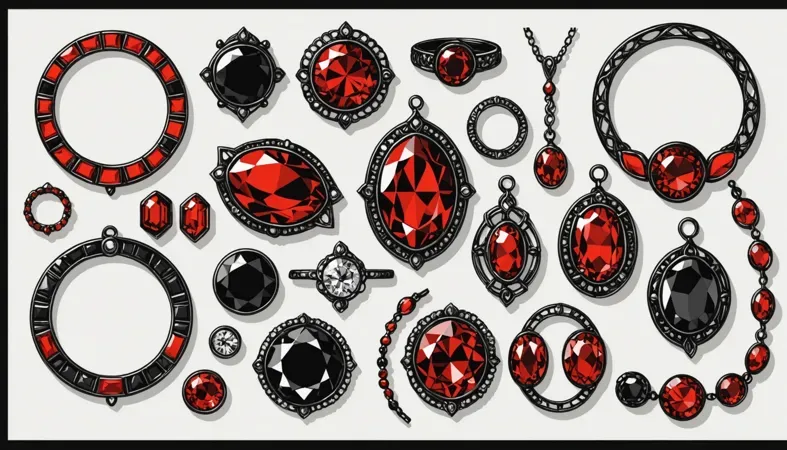
For further exploration of all things welding, we invite you to visit our homepage: What is Welding, your comprehensive resource for welding information!
Conclusion
That’s everything I wanted to share with you. We covered how to weld on Cricut, what Cricut is, types of Cricut machines, steps to weld successfully, and factors affecting the welding process. I also touched on some FAQs that people often ask.
So, how to weld on Cricut? It’s all about merging shapes using the software, ensuring they fit perfectly together for one seamless cut. Remember, whether you’re using the Cricut Explore Air 2 or another model, following these steps is crucial. Wishing you success in your welding projects.
Joe Carter is a retired welding professional with over 40 years of hands-on experience in the industry, spanning ship repair, structural welding, and even underwater projects. Joe is a master of MIG, TIG, and Stick welding. Passionate about mentoring the next generation of welders, Joe now shares his decades of expertise and practical insights to help others build rewarding careers in welding.
Crafting, Cricut, Cricut Design Space, DIY, DIY Projects, SVG Files, Welding, Welding Applications, Welding Techniques
